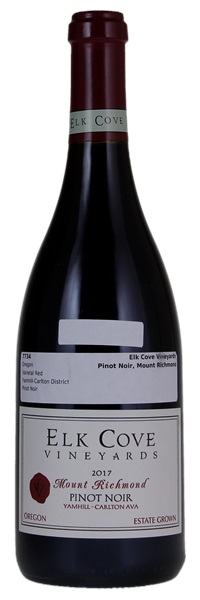Estimate

Offers grace and presence, with layered cherry and pomegranate flavors, accented by sassafras tea and spice notes, building tension toward refined tannins.
There’s a deep-set, dark-cherry core that delivers on the nose and palate here with a sleek, fine-boned feel to the tannins that carry very even and long. Neatly detailed. Plenty of fresh and vibrant red cherries.
...aromas of cranberry sauce, Italian plum, crushed black cherries, vanilla and touches of charcuterie, dried earth and potpourri. It’s light to medium-bodied and silky with a good core of spicy fruits, a firm, grainy frame and good freshness, finishing long and spicy.
...fine-tuned and elegant...raspberry limned with citrus. Flavors are sharp, and the tannins polished.